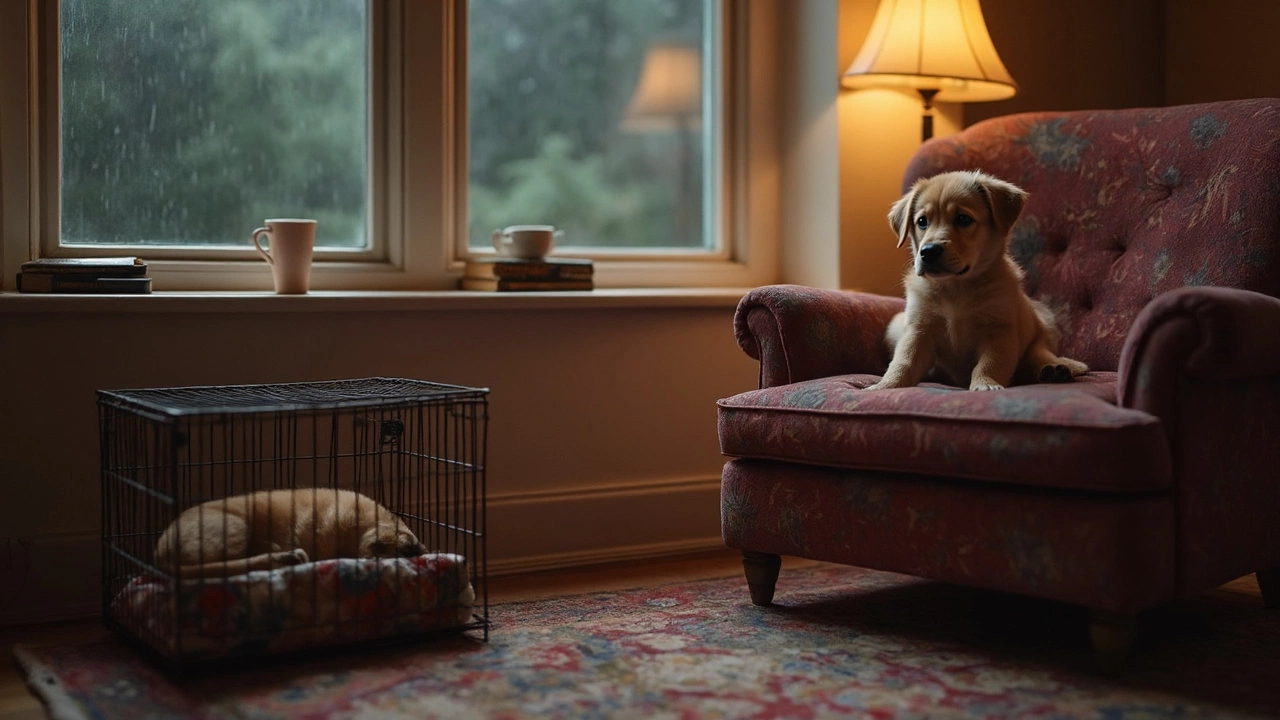Puppy Crate Training Made Easy
Crate training isn’t about locking your puppy up; it’s about giving them a cozy, safe spot they can call their own. When done right, the crate becomes a place your pup looks forward to, not a punishment. This guide walks you through the basics, so you can start today and see calm, confident behavior in just a few weeks.
Getting the Right Crate
First, pick a crate that fits your puppy’s size. They should be able to stand, turn around, and lie down comfortably, but not so big that they slither to one end and use the other as a bathroom. Metal crates are sturdy and ventilated, while plastic ones feel den‑like. Add a soft blanket and a chew‑safe toy to make it inviting. Remember, the crate is a den, not a cage, so keep it in a quiet part of the house where family activity happens.
Step‑by‑Step Crate Introduction
1. Open‑door practice. Leave the door open and toss a treat inside. Let your puppy wander in and out at their own pace. Praise any entry, even if it’s just a sniff.
2. Short stays. Once they’re comfortable going in, close the door for five seconds while you’re nearby. Release them with a treat and a happy tone. Gradually increase the time by a few seconds each session.
3. Meal time inside. Feed your puppy their dinner in the crate. The positive association of food makes the space feel safe. Once they finish, leave the door open for a few minutes before letting them out.
4. Nighttime routine. Place the crate near your bedroom for the first few nights. A puppy’s bladder holds for about an hour per month of age, so an 8‑week old will need a bathroom break around 2‑3 am. Set a gentle alarm, take them out, then return them to the crate. Consistent timing helps them learn to hold longer.
5. Leave‑home practice. When you’re away for short trips, give a chew toy and a treat before closing the door. Keep departures low‑key; a big goodbye can make the crate feel like a penalty.
If your pup whines, resist the urge to open the door immediately. Wait a few seconds, then check for genuine needs (like a bathroom break). If it’s just anxiety, offer a calm voice and a quick pat, then close the door again. Over time, the whining fades as they realize the crate is safe.
Integrate crate time with house‑roam training. Once your puppy reliably stays in the crate for 30‑45 minutes, let them explore the living area under supervision. This balance prevents over‑dependence on the crate while still giving them a secure fallback.
Remember, patience beats speed. Some puppies catch on in days, others need a couple of weeks. Celebrate small wins – the first overnight stay, the first calm nap, the first confident entry on their own. With consistency, the crate becomes a peaceful retreat that helps with house‑training, travel, and vet visits. Your pup will thank you with fewer accidents, less chewing, and a calmer demeanor overall.

Should a Puppy Sleep in a Crate? Simple Facts and Real-Life Tips
Ever wondered if your new puppy should sleep in a crate? This article breaks down the pros, the drawbacks, and the best approaches for crate training at night. Discover what actually works for comfort, house-training, and safety, plus some surprising facts from real dog owners. Find out what your puppy might prefer and how to avoid the most common mistakes. Get practical, no-nonsense tips whether you’re a first-time pup parent or still on the fence about crates.
View more